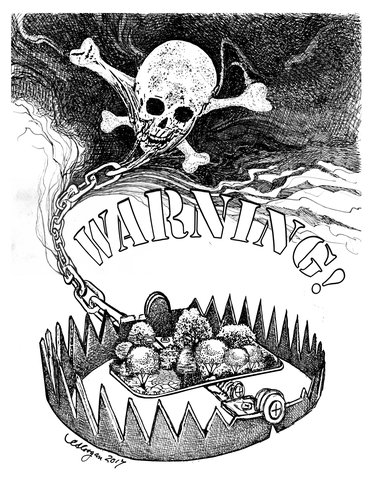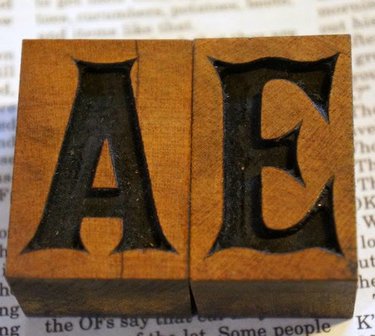Permanent warning is needed
In December, the Army Corps of Engineers held a session to inform the public that the former burn-pit area at the now-defunct Army depot near Guilderland Center required “no further action.” Last week, we again asked Gregory Goepfert, the corps’ long-time project manager for the abandoned site, the answers to two troubling questions raised at the December session.
Goepfert said the corps was “getting ready to issue” a document that would address the questions. The depot was used by the Army from 1941 to 1969, during World War II and the Korean War. Some of the debris left by the Army was hazardous. The depot land is now largely occupied by the Northeastern Industrial Park, adjacent to the Guilderland High School campus.
In December, a Guilderland school leader, Neil Sanders, had asked: Will the federal government cover costs to mitigate “vapor intrusion” from the closed burn pit if a new structure is built in the area with elevated concentrations?
Also, a long-time member of an advisory board meant to guide the cleanup process, Ted Ausfeld, asked: What if future property owners are not aware of dangers from remaining vapors?
The school district has cause to be concerned. In 2002, as Guilderland prepared to build a new bus garage, the construction work unearthed Army debris. The district had purchased, for one dollar, about seven acres from the industrial park for the bus-facility project. The Army Corps did a half-million-dollar clean-up, paid for with federal funds, so that the project could proceed.
“We understand your concern about future liabilities to the district,” Geopfert had initially responded to Sanders’s question.
The federal government should be responsible for the toxic wastes the Army left behind whether it is physical debris — like that unearthed by workers on the bus-garage project — or vapors that remain despite the cleanup.
At the December session, Goepfert said that the Army Corps “will not implement land-use controls nor conduct any future monitoring.” He said the existing wells monitoring the burn-pit area would be closed.
“The Corps doesn’t implement land-use control; the property owner does,” said Goepfert.
“What if there were a problem and nobody’s aware of it?” asked Ausfeld.
Ausfeld knows, through his own experience, that this can happen. He had worked for the town of Guilderland in the mid-1970s when the town was building a new water plant on land that had once been part of the Army depot. “We didn’t know the pits were there,” said Ausfeld of when the problems were first discovered, and the town ended up bearing much of the cost.
The costs in human suffering outweigh the monetary costs. Many of the chemicals left at the depot were toxic.
We understand tests have been conducted in the former burn-pit area that, as Geopfert stated, show the only remaining risk would be “soil vapor intrusion” into a future building constructed in the area identified as having the highest soil gas concentrations. Such areas lie on property now owned by the Northeastern Industrial Park and the Guilderland School District.
Goepfert stressed that both the school district and the industrial park have “been notified of the need to assess site conditions if a future building is planned.”
Ah, but the future is vast. What if the current leaders of those institutions have left?
“I think there is a lot of institutional knowledge out there,” Guilderland’s supervisor, Peter Barber, told us when we asked him about it.
If the hazards aren’t codified, knowledge of them could be lost. The institutions themselves may not exist in the future. Just as the Army abandoned some of its depots — and left no records of what was buried on the land — so, too, schools have been known to move to new campuses and industrial parks can change hands.
“No matter where you build in the Northeastern Industrial Park, you’ve got a potential problem,” Ausfeld said at the December meeting. He said he was sure, sometime in the future, someone would want to build there.
When we asked Goepfert how someone in the future owning the property with potential risks would know about those risks, Goepfert said that tracing property titles would show it was once owned by the Army. That’s not enough. Knowing that the Army had once owned a piece of property wouldn’t raise a red flag about potential toxins.
Asked if the title would indicate the danger, Goepfert said, “No.”
He also said, “I would imagine the town of Guilderland has something in their planning documents that would show that this was a formerly used defense site.”
When we asked Supervisor Barber if designating potentially hazardous building areas should be part of town zoning, he said, “It’s not in the zoning code. It’s part of due diligence for anyone buying property.”
We believe the town should protect its residents — present and future — by clearly designating sites that have held toxic wastes.
In the early part of this century, we detailed Joan Burns’s story. She told us our articles and editorials helped get the needed attention and funds to solve her problem. But it would have been far, far better if a town zoning map had designated the land where she lives as having toxic waste in the first place. She never would have bought the property and suffered the way she did.
In 1963, when the depot was being phased out, Burns and her late husband, Milton, had bought their house with 40 acres on Route 201, Depot Road, from the General Services Administration; they were not told about waste being buried there.
News of the Love Canal broke in 1979; Hooker Chemical had buried toxic waste in western New York where houses were later built and residents suffered health problems. Burns heard about the Love Canal and she and her husband noted areas where nothing grew and their soil appeared to have an oily substance on the surface.
Burns, a nurse, became suspicious and was in contact with a variety of agencies — county, state, and federal — trying to get answers. Burns told us in 2005 that her family had suffered from “a lot of health problems” that she believed were associated with waste she learned the Army had buried on her property.
“My husband died of colon cancer in 1995,” she said. “He was the one out on the land.” Her two horses, who weren’t genetically related, also died of cancer, Burns said. She had autopsies done at Cornell, she said, and found that both had died of lymphoma. She also had cats that “mysteriously died,” she said, after they had “gotten out by mistake.”
She couldn’t sell her land, she said at the time, or use it the way it was. “I don’t like walking on it,” she said. “I don’t use it. It’s wasted land.”
Ultimately, federal funds — over half-a-million dollars — were secured through Goepfert, and the toxic waste the Army had left on Burns’s land was removed.
That is as it should be. Again, the federal government must bear responsibility for the toxic waste it left behind.
Our point, though is, as the Army Corps closes the former burn pit area — and will presumably close other sites it had designated “areas of concern,” with potential threat to human health — there needs to be a reliable system put in place to inform people — people who may not live here now or may not yet be born — that these hazards exist.
— Melissa Hale-Spencer



